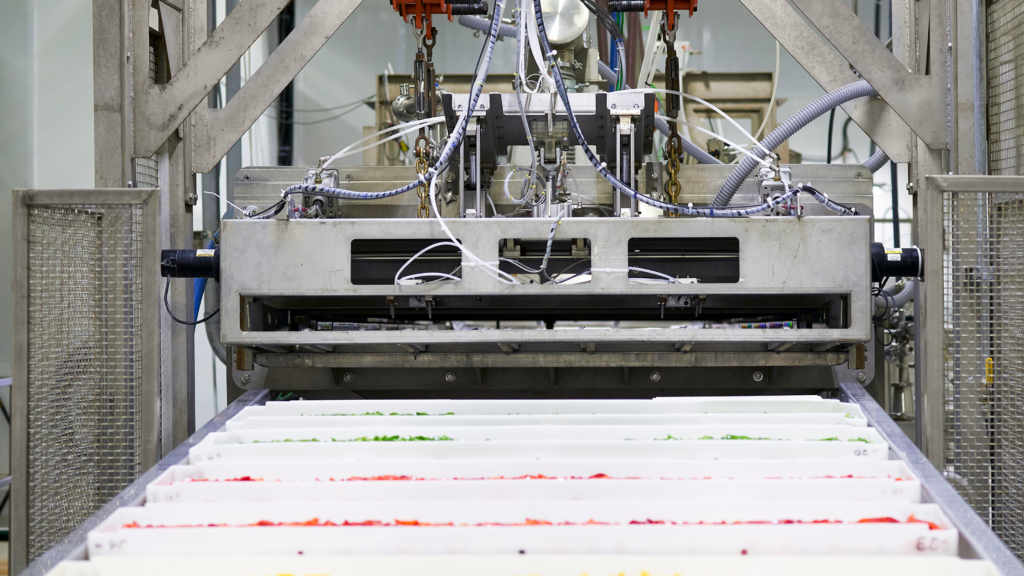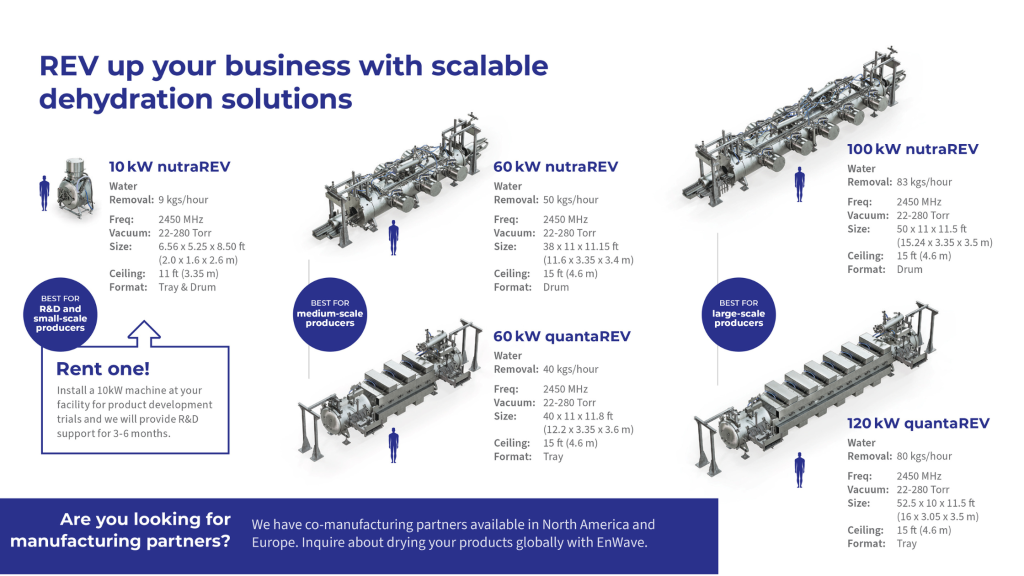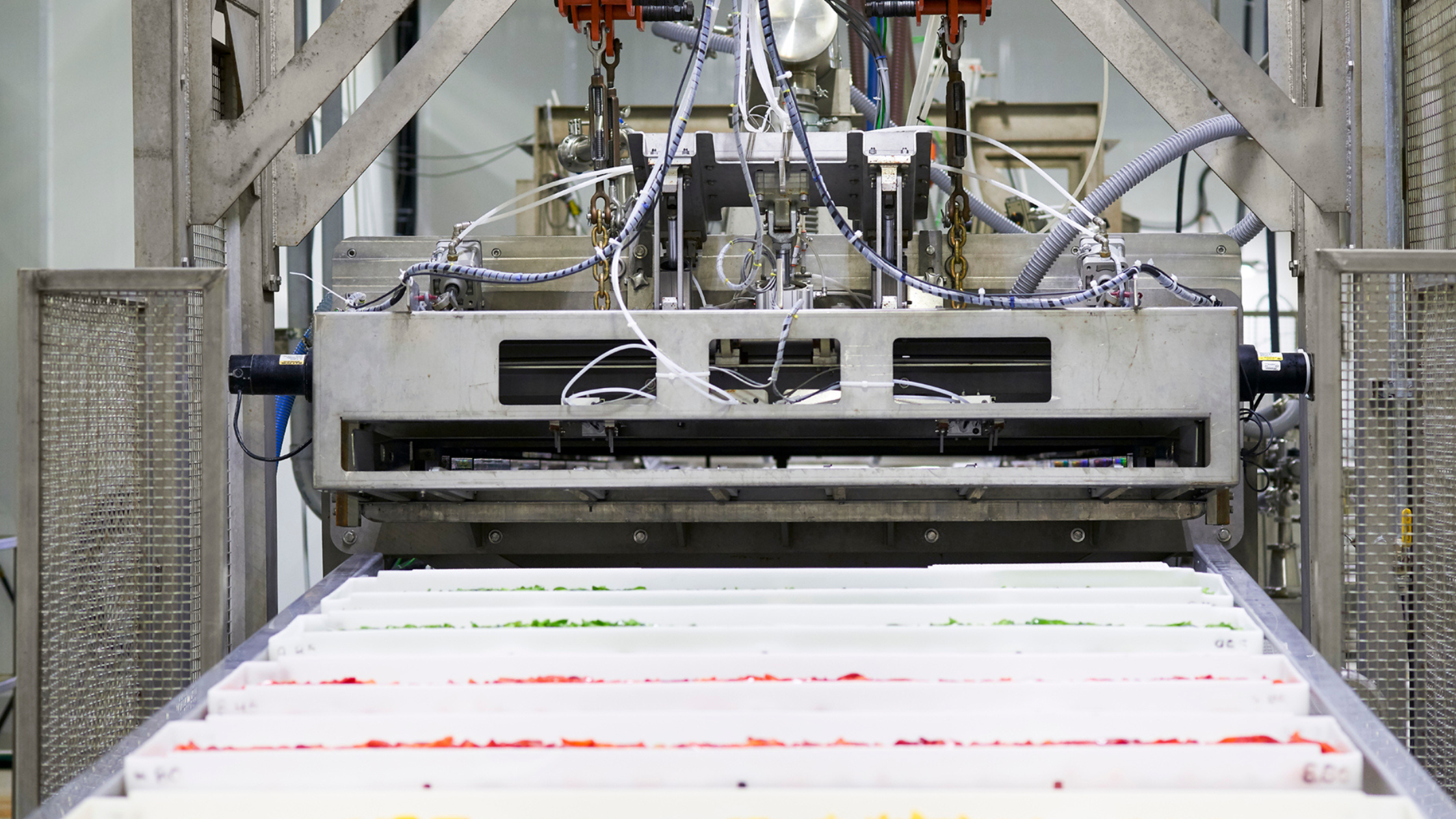What’s the true cost of traditional drying methods?
In recent years, the search for more sustainable and efficient food and material processing methods has intensified, driven by both environmental concerns and rising energy costs. One key area where significant advancements are being made is in drying technology, a critical process for preserving food, pharmaceuticals, and other moisture-sensitive products. Traditional drying methods, such as air drying and freeze drying, have been dominant in the industry for decades, but they come with drawbacks, particularly in terms of energy consumption and overall efficiency. This is where microwave drying technology offers a compelling alternative.

At Enwave, we specialize in advanced microwave dehydration technology, which has been shown to significantly reduce energy usage while preserving the quality, texture, and nutritional value of dried products. Let’s explore how this innovative drying method is reshaping the landscape of industrial drying and contributing to a more sustainable future.
Understanding the energy challenge in drying processes
Drying is an essential process across industries, but it is also highly energy-intensive. Conventional drying methods, such as air drying, rely on external heat sources to evaporate moisture, which often leads to uneven drying, long processing times, and substantial energy loss. Freeze drying, another popular method, requires extremely low temperatures and vacuum pressure, which can also result in high energy consumption.
According to research published in Scientific Reports (2023), drying processes can account for up to 15% of industrial energy consumption worldwide, making energy efficiency a critical factor for manufacturers seeking to reduce operational costs and carbon footprints. This energy burden has spurred the search for more efficient solutions—and microwave drying has emerged as a top contender.
How microwave drying works
Microwave drying is based on the principle of volumetric heating, where microwaves penetrate the material and cause water molecules to oscillate rapidly, generating heat from within. This internal heating mechanism allows for faster, more uniform moisture removal compared to traditional methods, which rely on surface heating and gradual heat diffusion.
Unlike conventional drying, which may require several hours or even days to complete, microwave drying can achieve similar or superior results in a fraction of the time. This not only reduces processing times but also minimizes energy losses, as less heat is wasted in the surrounding environment.
Key energy-saving benefits of microwave drying
Faster Drying Times
One of the primary advantages of microwave drying is its speed. By directly heating the water molecules within the product, microwave drying can achieve drying rates that are up to 50% faster than conventional methods. This rapid processing reduces the overall energy input required to remove moisture, translating to lower energy consumption and higher throughput.
Improved Energy Efficiency
Microwave drying operates with greater energy efficiency due to its targeted heating mechanism. Traditional methods often suffer from heat loss due to the need to heat the surrounding air and equipment surfaces. In contrast, microwave drying focuses energy directly on the product, minimizing waste and maximizing efficiency.
Uniform Moisture Removal
Uneven drying is a common issue with conventional methods, which can lead to quality degradation, such as case hardening, shrinkage, or loss of flavor and nutrients. Microwave drying’s volumetric heating ensures more uniform moisture removal, reducing the risk of over-drying and enhancing product quality while consuming less energy.
Reduced Carbon Footprint
By cutting energy usage, microwave drying also helps reduce greenhouse gas emissions associated with industrial drying processes. This aligns with the global push toward more sustainable manufacturing practices and can help companies meet their environmental, social, and governance (ESG) goals.

Applications of microwave drying across industries
Microwave drying technology has broad applications across various industries, including food processing, pharmaceuticals, and materials science. Here are a few examples of how this innovative drying method is being used:
- Food Processing: Microwave drying is particularly effective for drying fruits, vegetables, herbs, and snacks. It helps retain the natural color, flavor, and nutritional content of foods, providing consumers with high-quality, minimally processed products.
- Pharmaceuticals: In the pharmaceutical industry, microwave drying is used to dehydrate heat-sensitive compounds, preserving their potency and efficacy while reducing processing times.
- Textiles and Polymers: Microwave drying is also gaining traction in the drying of textiles, polymers, and other industrial materials, where it helps improve product uniformity and reduce drying times.
Scientific backing for microwave drying’s energy efficiency
A growing body of scientific research supports the energy-saving benefits of microwave drying. For example, a comprehensive review published in IntechOpen highlights the superior energy efficiency of microwave drying compared to conventional methods. The study notes that microwave drying can achieve energy savings of up to 40% while maintaining or even enhancing product quality.
Similarly, a Science Direct study underscores the potential of microwave drying to reduce energy consumption and carbon emissions in industrial drying applications. By optimizing drying parameters and integrating microwave technology into existing processes, manufacturers can achieve significant energy savings without compromising product quality.
Choosing the right microwave drying solution
While the benefits of microwave drying are clear, it’s important to choose the right solution for your specific application. At Enwave, we offer customizable microwave dehydration systems designed to meet the unique needs of different industries. Our patented technology, backed by years of research and development and 18 patents, delivers unparalleled efficiency, quality, and scalability.
Whether you’re looking to enhance energy efficiency, improve product quality, or reduce processing times, our team of experts can help you find the right microwave drying solution to achieve your goals.
Embracing a more sustainable future
As industries continue to grapple with rising energy costs and increasing environmental regulations, the need for more sustainable processing methods has never been greater. Advanced microwave drying technology offers a practical, energy-efficient alternative to traditional drying methods, helping companies reduce their energy consumption, lower their carbon footprint, and enhance their competitive edge.
To learn more about how Enwave Corporation’s microwave dehydration technology can benefit your business, explore our website at or contact us to schedule a consultation. Together, we can pave the way for a more sustainable and energy-efficient future.


